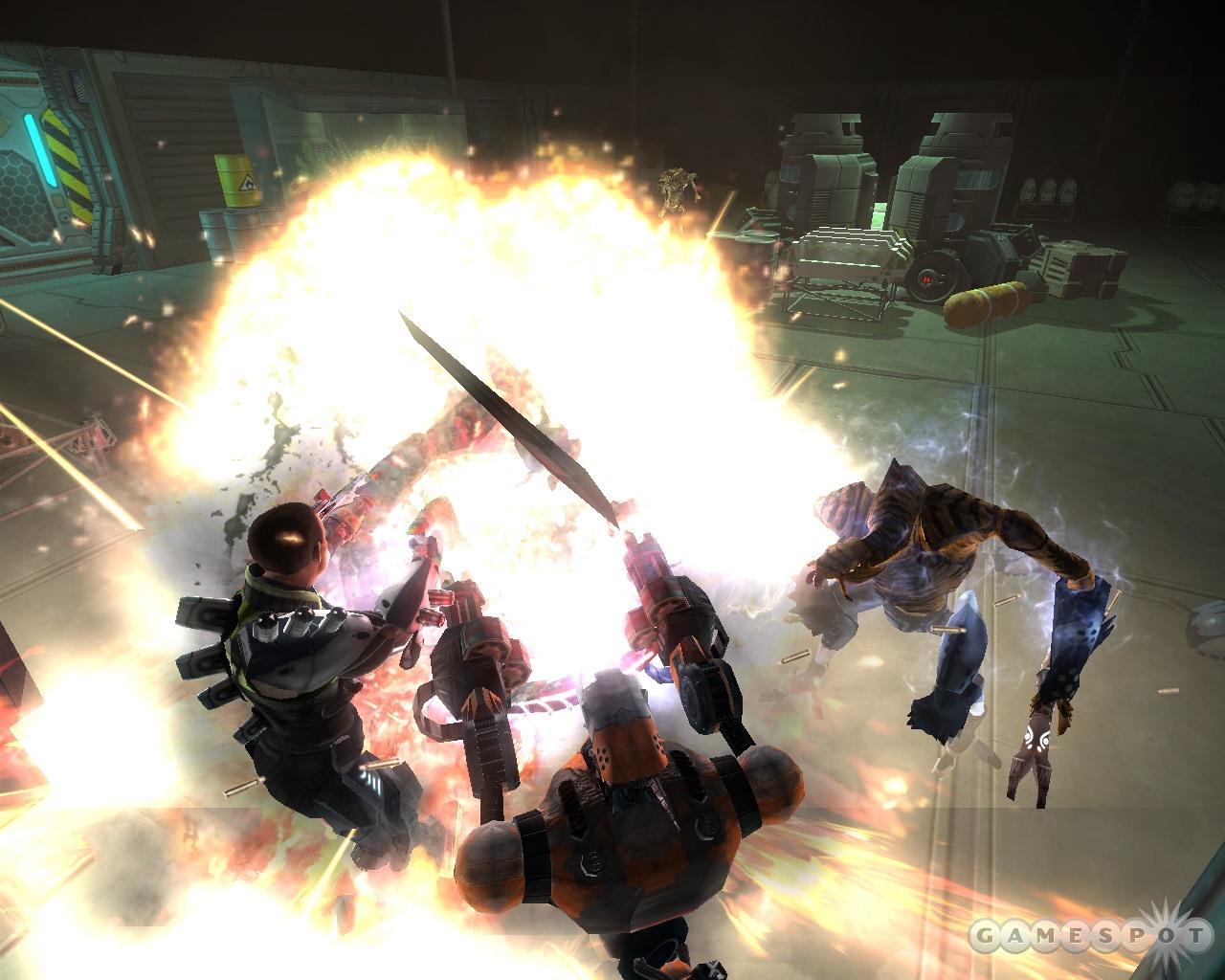Space Siege Q&A - Story, Multiplayer, and the Influence of Dungeon Siege
Gas Powered Games gives us new details from on board the Armstrong.
Dungeon Siege. Supreme Commander. Gas Powered Games latest project? Space Siege. A spiritual successor to Dungeon Siege, Space Siege takes place in, well, space, after earth has been destroyed by the alien Kerak. More than a dungeon-crawler with a galactic makeover, Space Siege forces you to make important decisions that affect gameplay. Do you choose to swap your limbs for cybernetic implants to earn a combat bonus? How will you upgrade your attack robot companion, HR-V? We sat down with lead designer Mike Marr to get the latest on Space Siege. Here's what he had to say.
GameSpot: Give us an overview of the single-player structure of Space Siege. How does the game unfold at the very start?
Mike Marr: Space Siege takes place on the Armstrong, which holds the last human survivors from the war between the Kerak and humans. At the start of the game, you see the Armstrong narrowly escape the final Kerak assault on Earth. Unfortunately, the Kerak managed to attach an attack pod to the Armstrong, and as the colony ship escapes, the Kerak begin to invade the ship. The game begins with you working to power up the ship's engines while fending off the aliens that are running around the ship.
GS: Space Siege seems like a more story-driven game than the Dungeon Siege series--how will the story unfold throughout the single-player game? Because Space Siege seems to be looking to include some of the same kind of addictive hack-and-slash gameplay as the Dungeon Siege series, how will the story be incorporated to draw players in without distracting them from chopping down bad guys and picking up all that wonderful loot?
MM: For Space Siege, we devoted more time and effort on delivering an engaging story than we have in the past. That said, I really wanted to deliver an experience that didn't bog the player down in dialogue; spending hours listening to throw-away characters drone on about their petty problems has never intrigued me. So in Space Siege, we focus on telling a singular story with several minor themes, and more importantly, we never stop the player during dialogue. You're free to roam about and continue normal gameplay while the story progresses.
So I'd say the game is more story-driven and less distracting than the Dungeon Siege series. As for dialogue choices...those are performed through the player's actions during the game, not through navigating a dialogue tree.
GS: Will the single-player game be structured in a similar way to the Dungeon Siege series, with progressively harder areas, intermittent merchants for shopping and selling, and gradual companions added to your party? What will be new and different in Space Siege?
MM: The big difference in Space Siege is that buying and selling is streamlined; there is no inventory management, and we allow you to shop frequently. So while the game is structured similarly to Dungeon Siege with regards to exploration and character development, we've eliminated the need to spend time sorting your inventory and going all around town looking for vendors and quest givers.
GS: Having created both the original Dungeon Siege and its sequel, along with expansion packs, what are the most important lessons the team has learned about creating a compelling single-player action role-playing game?
MM: I think perhaps the biggest takeaway is just how much the RPG space has changed since the release of Dungeon Siege. Gamers today expect a much more streamlined game that delivers a good story, excellent pacing, a forgiving death system, and buttery controls. Any less just isn't acceptable or fun.
GS: Give us an overview of Space Siege's multiplayer. What kind of experience do you hope players will have playing the game online?
MM: From the character-development standpoint, multiplayer starts with full access to the weapons, cybernetics, and skills. However, you have no upgrades to your gear. So, imagine starting World of Warcraft at level 70 with no gold or equipment. It's similar to that.
Multiplayer is about players developing methods of working together to complete missions. You might have one player specialize in setting up minefields and turrets while another player concentrates on luring the enemy into those traps. It's all about creating synergistic play styles and really opening up the RPG character-development options to the players. And the game offers an easy way to change your play style in between missions to keep things interesting and try different character builds.
GS: How will the multiplayer game be structured--will it consist of a connected version of the single-player campaign playable in multiplayer? One-off maps? Any competitive modes?
MM: The multiplayer game has an entirely different storyline from single-player and actually takes place on a different ship. We've made all new maps for multiplayer that were designed with multiple players in mind. There are no competitive modes.

GS: Finally, is there anything else you'd like to add about Space Siege's single- or multiplayer modes? Or about the game in general?
MM: I am really happy with how Space Siege came together. We've got a unique slant on how you develop your character, and we deliver a story that is interesting, fun, and doesn't slow down gameplay. Overall the game offers a great experience and removes much of the tedium found in many RPGs.
Got a news tip or want to contact us directly? Email news@gamespot.com

Join the conversation